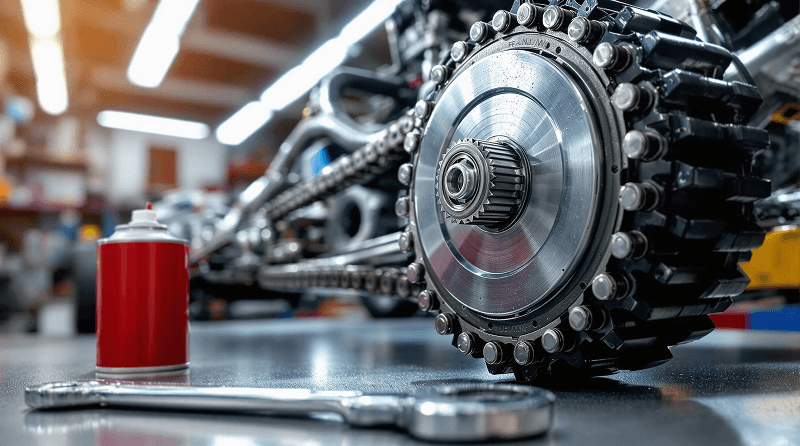When I first got my go-kart, I was all about the speed and thrill of racing around the track. But after a few disappointing breakdowns, I quickly learned that proper go-kart gear maintenance isn’t just important—it’s essential for both performance and safety.
Whether you’ve just purchased your first kart or you’re looking to improve your maintenance routine, this guide will walk you through everything you need to know to keep your gears in top condition.
Why Go-Kart Gear Maintenance Matters
Before diving into specific maintenance tips, let’s understand why proper gear maintenance is crucial:
- Extends the life of your go-kart components
- Ensures optimal performance on the track
- Prevents costly repairs and replacements
- Maintains safety while driving at high speeds
- Provides more consistent and enjoyable racing experiences
I once ignored a strange grinding noise coming from my gearbox, thinking it would resolve itself. Two laps later, I was stranded on the side of the track with a seized transmission. Trust me—regular maintenance saves both money and disappointment!
Understanding Your Go-Kart’s Gear System
To maintain something properly, you first need to understand how it works. Most go-karts use a relatively simple transmission system compared to cars, but that doesn’t make maintenance any less important.
Common Go-Kart Transmission Types
| Transmission Type | Description | Maintenance Level |
|---|---|---|
| Direct Drive | Engine directly connected to axle | Low-Medium |
| Centrifugal Clutch | Automatic engagement based on RPM | Medium |
| Torque Converter | Belt-driven system with variable ratios | Medium-High |
| Manual Transmission | Shifter karts with multiple gears | High |
Most beginner karts use either a centrifugal clutch or torque converter system, which provides a good balance between simplicity and performance. Understanding which system your kart uses is the first step in proper maintenance.
Essential Go-Kart Gear Maintenance Checklist
1. Regular Inspection Routine
The foundation of good go-kart gear maintenance is a consistent inspection routine. I recommend checking these components before every racing session:
- Chain tension and lubrication
- Sprocket alignment and wear
- Clutch operation and engagement
- Gear oil levels (for shifter karts)
- Mounting bolts and hardware
2. Chain Care and Maintenance
Your chain is one of the most critical components of your go-kart’s drive system. Here’s how to keep it in optimal condition:
Proper Chain Tension
Too tight, and you’ll put excessive strain on your bearings and axle. Too loose, and you risk the chain jumping off the sprockets or causing inconsistent power delivery.
To check proper tension:
- Push the chain at its midpoint between sprockets
- You should have about ½ inch (12-13mm) of play
- Adjust as needed using your engine mount or tensioner
I learned this lesson the hard way when my chain snapped during a practice session because it was too tight. Not only did I lose valuable track time, but I also had to replace both the chain and sprocket!
Chain Lubrication
A properly lubricated chain is essential for smooth operation and longevity. Here’s my process:
- Clean the chain thoroughly with a degreaser
- Let it dry completely
- Apply a high-quality chain lubricant specifically designed for go-karts
- Wipe off excess lubricant to prevent attracting dirt
For best results, lubricate your chain after every racing day, especially if you’ve been driving in wet conditions. Speaking of which, if you’re wondering about go-karting in wet weather, there are special considerations for your gear system.
3. Sprocket Maintenance
Your sprockets work in tandem with your chain to transfer power from the engine to the wheels. Regular inspection is crucial:
- Check for worn or broken teeth
- Ensure proper alignment between front and rear sprockets
- Verify secure mounting to the engine and axle
- Clean debris from between teeth regularly
Pro Tip: Take a photo of your sprockets when new so you have a reference point when checking for wear later on.
4. Clutch Care
The clutch is the heart of your go-kart’s transmission system. Whether you have a centrifugal clutch or torque converter, proper maintenance is essential.
For Centrifugal Clutches:
- Check for shoe wear regularly
- Inspect the drum for scoring or excessive wear
- Verify proper engagement RPM
- Adjust the clutch if necessary
If you notice your clutch is smoking after use, this could indicate a serious problem. Check out this guide on go-kart clutch smoking to diagnose and fix the issue.
For Torque Converters:
- Inspect belt condition for cracks or fraying
- Check pulley alignment
- Verify proper belt tension
- Listen for unusual noises during operation
Learning how to put a belt on a go-kart correctly is an essential skill for torque converter maintenance.
Gear Ratio Optimization
Understanding and optimizing your gear ratio is a more advanced aspect of go-kart gear maintenance, but it can significantly impact your performance.
What Is Gear Ratio?
The gear ratio is determined by the number of teeth on your drive sprocket (connected to the engine) versus the driven sprocket (connected to the axle). This ratio affects:
- Top speed
- Acceleration
- Engine RPM at cruising speed
- Overall performance
For beginners using a Predator 212cc engine (a popular choice), finding the best gear ratio for your Predator 212cc can make a huge difference in performance.
Changing Your Gear Ratio
When changing your gear ratio, remember these principles:
- Larger rear sprocket = more acceleration, less top speed
- Smaller rear sprocket = less acceleration, higher top speed
Always ensure you’re using compatible components and maintaining proper chain tension after any gear ratio changes.
Troubleshooting Common Gear Problems
Even with regular maintenance, problems can occur. Here are some common issues and how to address them:
1. Chain Keeps Coming Off
Possible causes:
- Improper tension
- Misaligned sprockets
- Worn sprocket teeth
- Loose engine mount
Solution: Check and correct alignment, replace worn components, and ensure proper tension.
2. Clutch Not Engaging Properly
Possible causes:
- Worn clutch shoes
- Incorrect adjustment
- Oil contamination
- Damaged springs
Solution: Clean, adjust, or replace clutch components as needed. The guide on how to adjust a centrifugal clutch can be particularly helpful here.
3. Grinding Noise from Transmission
Possible causes:
- Insufficient lubrication
- Worn gears or bearings
- Foreign debris in transmission
- Misaligned components
Solution: Inspect, clean, lubricate, and replace damaged parts as necessary. If you’re struggling to identify the problem, check out this comprehensive troubleshooting guide for go-karts.
Seasonal Maintenance Tips
Your maintenance routine should adapt to the seasons and how frequently you race.
Off-Season Storage
If you’re storing your kart for the winter or an extended period:
- Clean and lubricate all drive components
- Release tension on the chain
- Apply a light coating of anti-corrosion spray
- Store in a dry, climate-controlled environment if possible
Learning how to store a go-kart properly will ensure it’s ready to go when racing season returns.
Pre-Season Checklist
Before hitting the track after storage:
- Complete visual inspection of all gear components
- Re-tension and lubricate the chain
- Check all mounting hardware
- Test clutch engagement
- Verify proper gear oil levels (for shifter karts)
Essential Tools for Go-Kart Gear Maintenance
Having the right tools makes maintenance much easier. Here’s what I keep in my toolkit:
- Socket set (metric and standard)
- Chain breaker and master link pliers
- Sprocket alignment tool
- Clutch removal tools (specific to your clutch type)
- Chain lubricant and degreaser
- Torque wrench
- Digital caliper (for measuring wear)
Pro Tip: Invest in quality tools—they’ll last longer and make maintenance more accurate and efficient.
When to Seek Professional Help
While most go-kart gear maintenance can be done at home, some situations call for professional assistance:
- Internal transmission repairs on shifter karts
- Clutch rebuilds requiring special tools
- When symptoms persist despite your maintenance efforts
- After any significant impact or crash
Finding a good go-kart repair shop can save you time and prevent further damage when facing complex issues.
The Impact of Proper Gear Maintenance on Performance
I’ve noticed a direct correlation between how well I maintain my go-kart’s gear system and my performance on the track. Well-maintained gears provide:
- Smoother acceleration
- More consistent power delivery
- Better lap times
- Increased confidence while driving
- Less fatigue during longer sessions
As my racing instructor always says, “You can’t win races in the pits, but you can certainly lose them there.”
Safety Considerations
Proper go-kart gear maintenance isn’t just about performance—it’s about safety too. A chain failure or clutch malfunction at high speed can lead to accidents.
Always prioritize go-kart safety by:
- Never skipping maintenance checks
- Replacing worn components promptly
- Using quality replacement parts
- Following manufacturer recommendations
- Wearing proper safety gear while racing
Conclusion
Mastering go-kart gear maintenance might seem overwhelming at first, but it becomes second nature with practice. Start with basic inspections and gradually build your skills to handle more complex maintenance tasks.
Remember that consistency is key—a little maintenance before and after each racing session will prevent major problems down the road. Your go-kart will reward your diligence with better performance, longer component life, and more enjoyable racing experiences.
As you become more comfortable with basic maintenance, you can explore more advanced topics like how to make a go-kart faster or even building your own go-kart.

Goran, an experienced go-kart racer, fuels GoKartLife.com with his passion and expertise. He offers valuable insights and tips for fellow enthusiasts, fostering the growth of the go-kart community. Join Goran at GoKartLife.com and immerse yourself in this exhilarating sport.
Last modified: April 27, 2025



